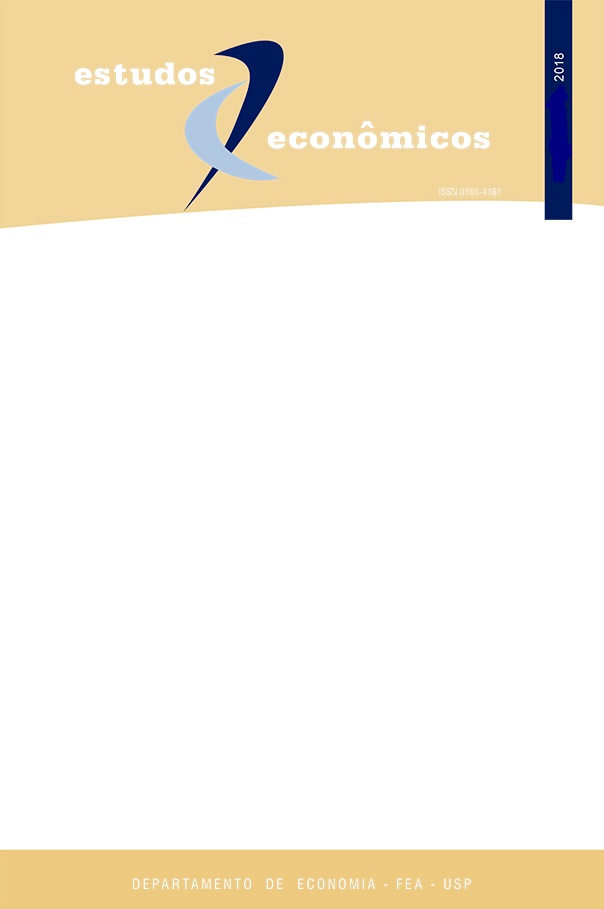On the costs of time for the competitiveness of the Brazilian industry: diagnosis and synthesis of the economic impacts of trade facilitation in Brazil
DOI:
https://doi.org/10.1590/0101-41614844lfrKeywords:
Trade Facilitation, Industry, General EquilibriumAbstract
This article evaluates the importance of delays at customs for the competitiveness of the transformation
industry in Brazil. Based on recent estimations of one-day costs of delays for trade as
well as in databases of the World Bank and GTAP (Global Trade Analysis Project) it reveals the
magnitude of the time barriers under its ad valorem equivalent form. Next, through general
equilibrium simulations, this paper estimates the impacts of streamlining customs procedures
over the performance of the transformation industry in Brazil, under different scenarios. Simulation
results highlight the strategic character of trade facilitation reforms for the Brazilian
economy, particularly for its transformation industry, and the priority of its inclusion as a relevant
topic in the long-term growth national agenda.
Downloads
References
Anderson, J. 1979. “A Theoretical Foundation for the Gravity Equation”. American Economic Review 69(1): 106-116.
Anderson, J., Wincoop, E. V. 2003. “Gravity and Gravitas: A Solution to the Border Puzzle”. American Economic Review 93(1): 170-192.
APEC. 1999. “Assessing APEC Trade Liberalization and Facilitation - 1999 update”. Technical report, APEC Economic Committee, Singapore.
Armington, P.S. 1969. “A Theory of Demand for Products Distinguished by Place of Production”. Staff Papers, IMF 16(1): 159-178.
Brockmeier, M. 1996. “A Graphical Exposition of the GTAP model”. GTAP Technical/Paper/No.8.www.gtap.agecon.purdue.edu/resources/res_display.asp?RecordID=31.
Dee, P. 1998. “The Comprehensiveness of APEC’s Free Trade Commitment”. Session VIII in The Economic Implications of Liberalizing, Publication 3101, US International Trade Comission, Washington, D.C.
Dennis, A. and Shepherd, B. 2011. “Trade facilitation and export diversification”. The World Economy, 34(1):101–122.
Dixon, P. B., Pearson, K. 1992. “Notes and Problems in Applied General Equilibrium Economics”. North-Holland Amsterdam.
Dixon, P. B., Jorgenson, D. W. 2013. “Handbook of Computable General Equilibrium Modeling”. North-Holland, vol.B.
Djankov , S., Freund, C., Pham, C.S. 2010. “Trading on Time”. The Review of Economics and Statistics 92(1): 166-173.
Francois, J., Meijl, H. V., Tongeren, F.V. 2003. “Economic Benefits of the Doha Round for the Netherlands”. Project Report, Agricultural Economics Research Institute, La Haye.
Fugazza, M., Maur, J.C. 2008. “Non-tariff barriers in CGE models: How useful for policy?”. Journal of Policy Modeling 30(3): 475-490.
Ginsburgh, V., Keyzer, M. 1997. “The Structure of Applied General Equilibrium Models”. The MIT Press.
Hertel, T. W. 1997. “Global trade analysis: modeling and applications”. Cambridge university press.
Hertel, T. W., Walmsley, T. L., Itakura, K. 2001. “Dynamic Effects of the “New-Age” Free Trade Agreement Between Japan and Singapore”. Journal of Economic Integration 16(4): 446-8.
Hummels, D., Schaur, G. 2013. “Time as a Trade Barrier”. American Economic Review 103(7).
Iwanow, T., Kirkpatrick, C. 2007. “Trade Facilitation, Regulatory Quality and Export Performance”. Journal of International Development 19(6): August, 735–753.
Minor, P., Tsigas, M. 2008. “Impacts of Better Trade Facilitation in Developing Countries”. 11th Annual GTAP Conference, Helsinki, Finland, 12-14, June.
Nordas, H., Piermartini, R. 2004. “Infrastructure and Trade”. WTO Economic Research and Statistics Division. Staff Working Paper ERSD-2004-04, WTO, Geneva.
OECD. 2003. “Quantitative Assessment of the Benefits of Trade Facilitation”. Working Party of the Trade Committee, TD/TC/WP31.
Persson, M. 2008. “Trade Facilitation and the EU-ACP Economic Partnership Agreements”. Journal of Economic Integration 23(3):518–546.
Zhang, J., Fung, H. 2006. “Winners and Losers: Assessing the Impact of Chinese Yuan Appreciation”. Journal of Policy Modeling, Elsevier 28(9): 995-1009.
Yotov, Y.V., Piermartini, J., Monteiro, J.A., Larch, M. 2016. “An Advanced Guide to Trade Policy Analysis: The Structural Gravity Model”. Co-published by Unctad and WTO.
Wilson, J.S., Mann, C.L., Otsuki, T. 2005. “Assessing the Benefits of Trade Facilitation: A Global Perspective”. The World Economy 28(6): June, 841-871.
World Trade Organization. 2015. “Speeding up Trade: Benefits and Challenges of Implementing the WTO Trade Facilitation Agreement”. World Trade Report, 2015.
Downloads
Published
Issue
Section
License
Copyright (c) 2018 Estudos Econômicos (São Paulo)

This work is licensed under a Creative Commons Attribution-NonCommercial 4.0 International License.
By submitting an article, the author authorizes its publication and attests that it has not been submitted to any other journal. The original article is considered final. Articles selected for publication are proofread for grammatical and orthographic errors. The journal does not pay rights for published articles. The Institute of Economic Research from the School of Economics, Business and Accounting of the University of São Paulo (Instituto de Pesquisas Econômicas da Faculdade de Economia, Administração e Contabilidade da Universidade de São Paulo) owns the journal's copyright.





 Atualizado em 14/08/2025
Atualizado em 14/08/2025